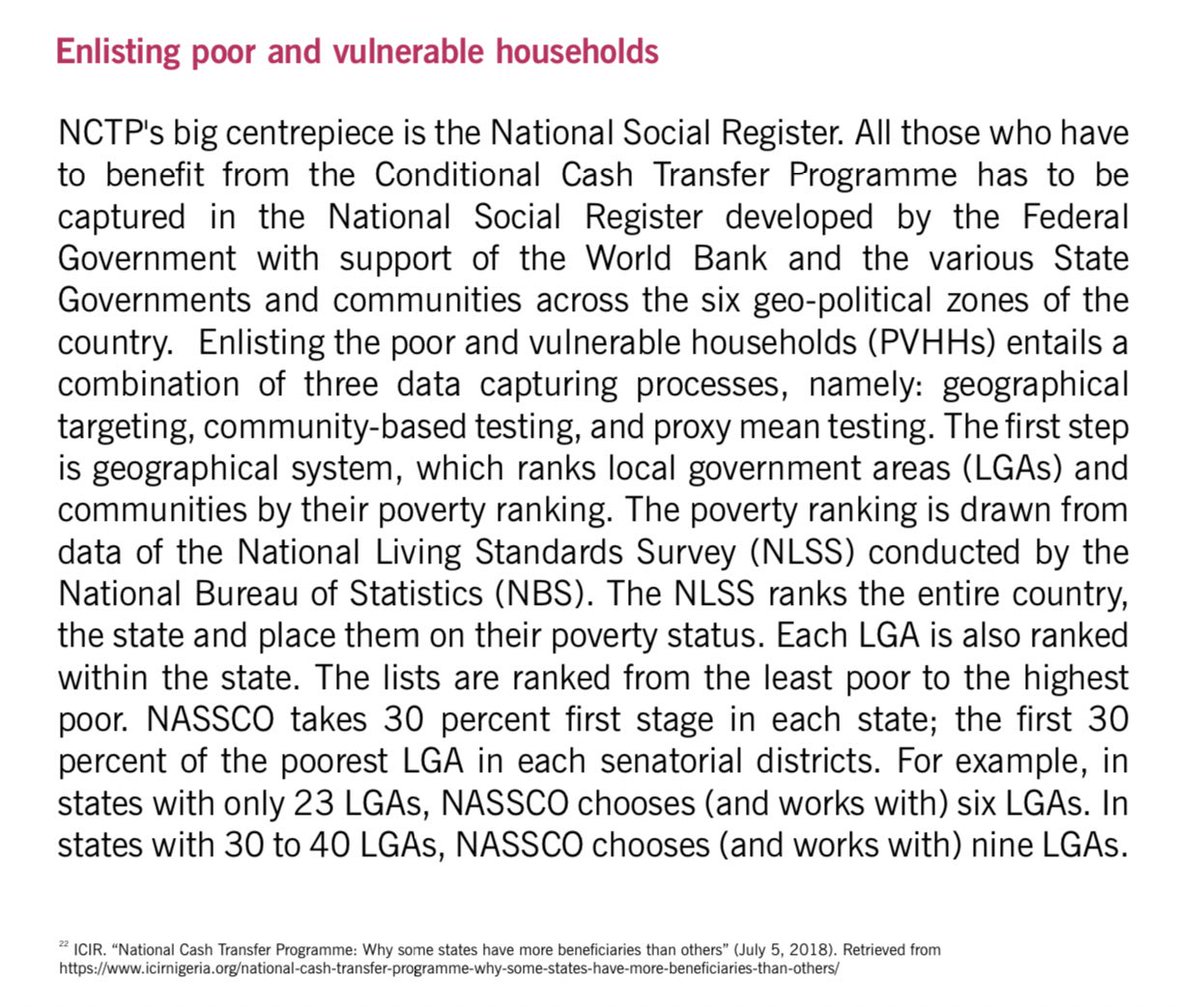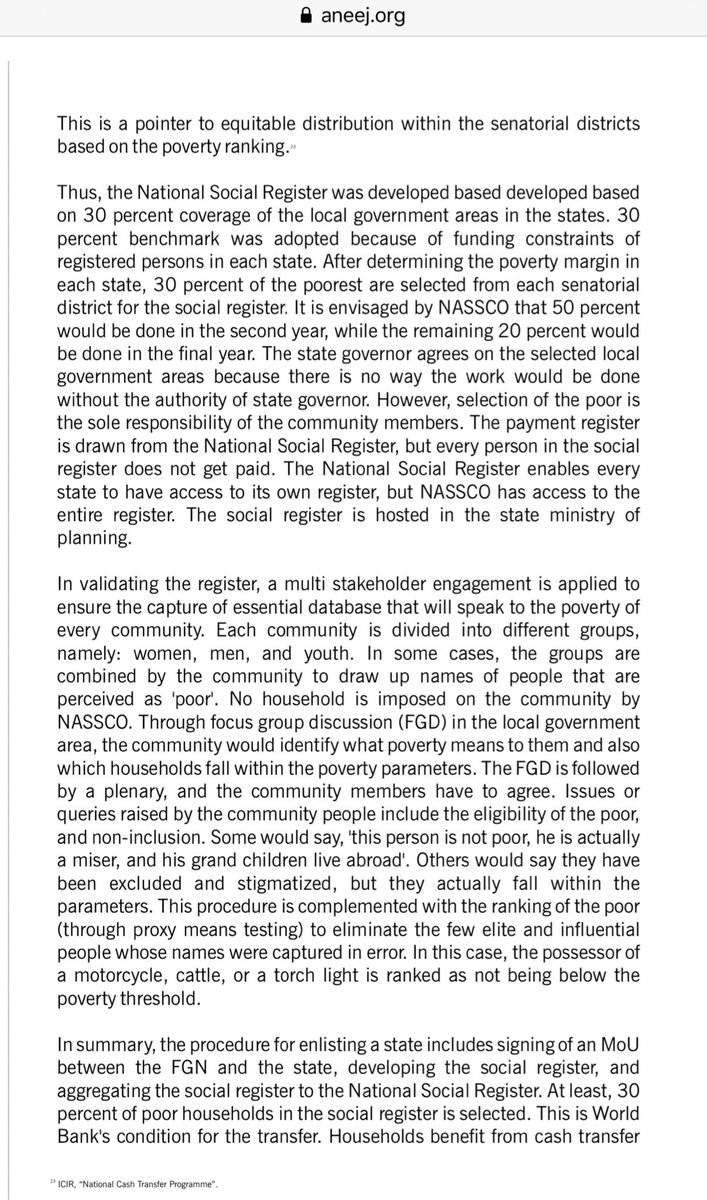#Thread
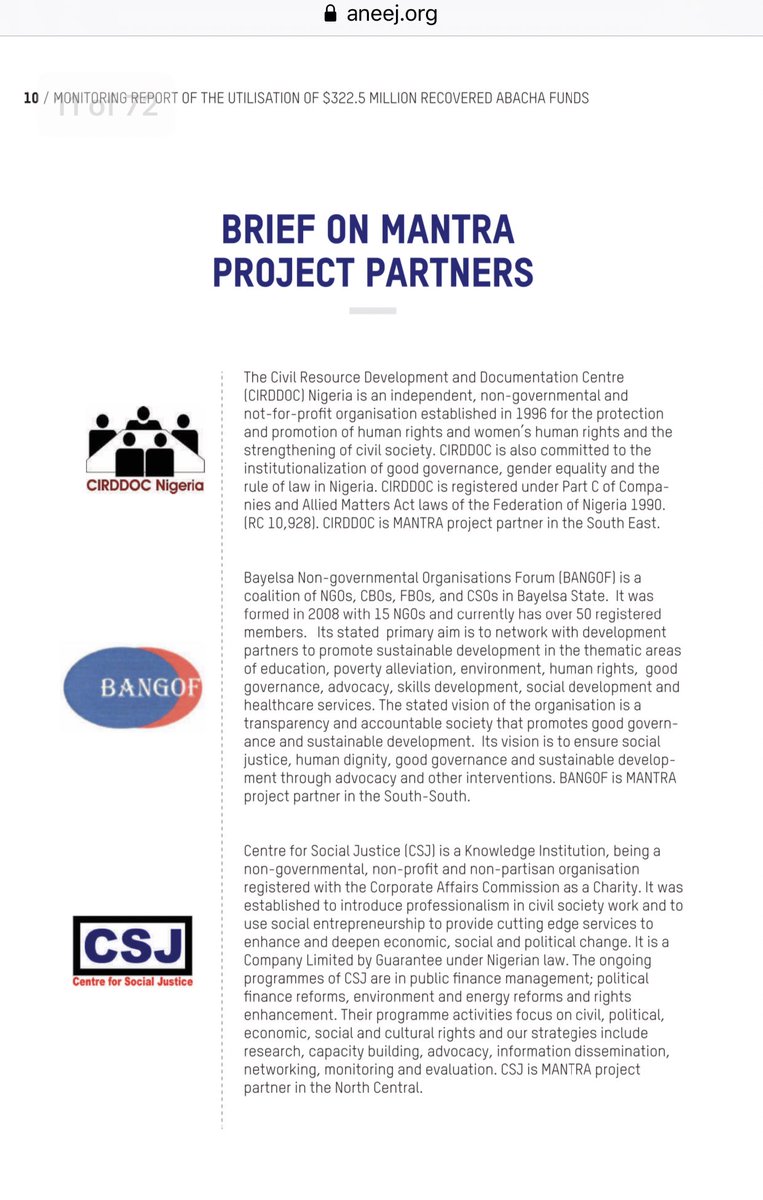
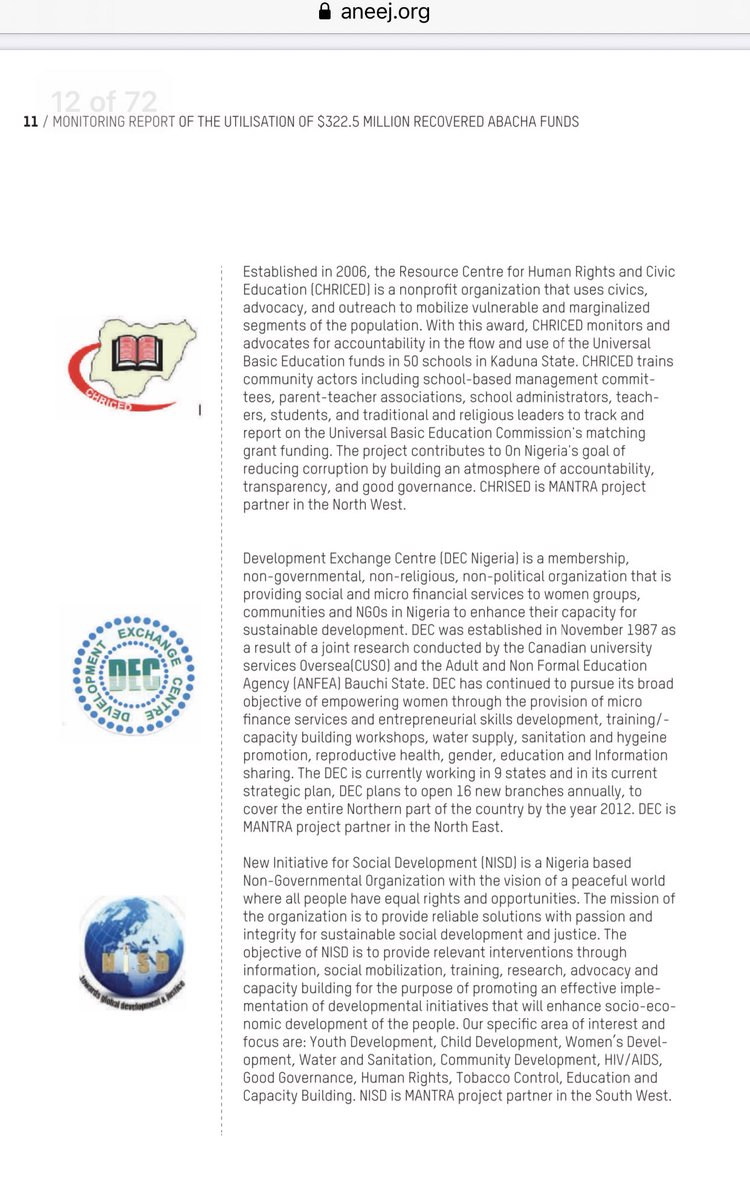
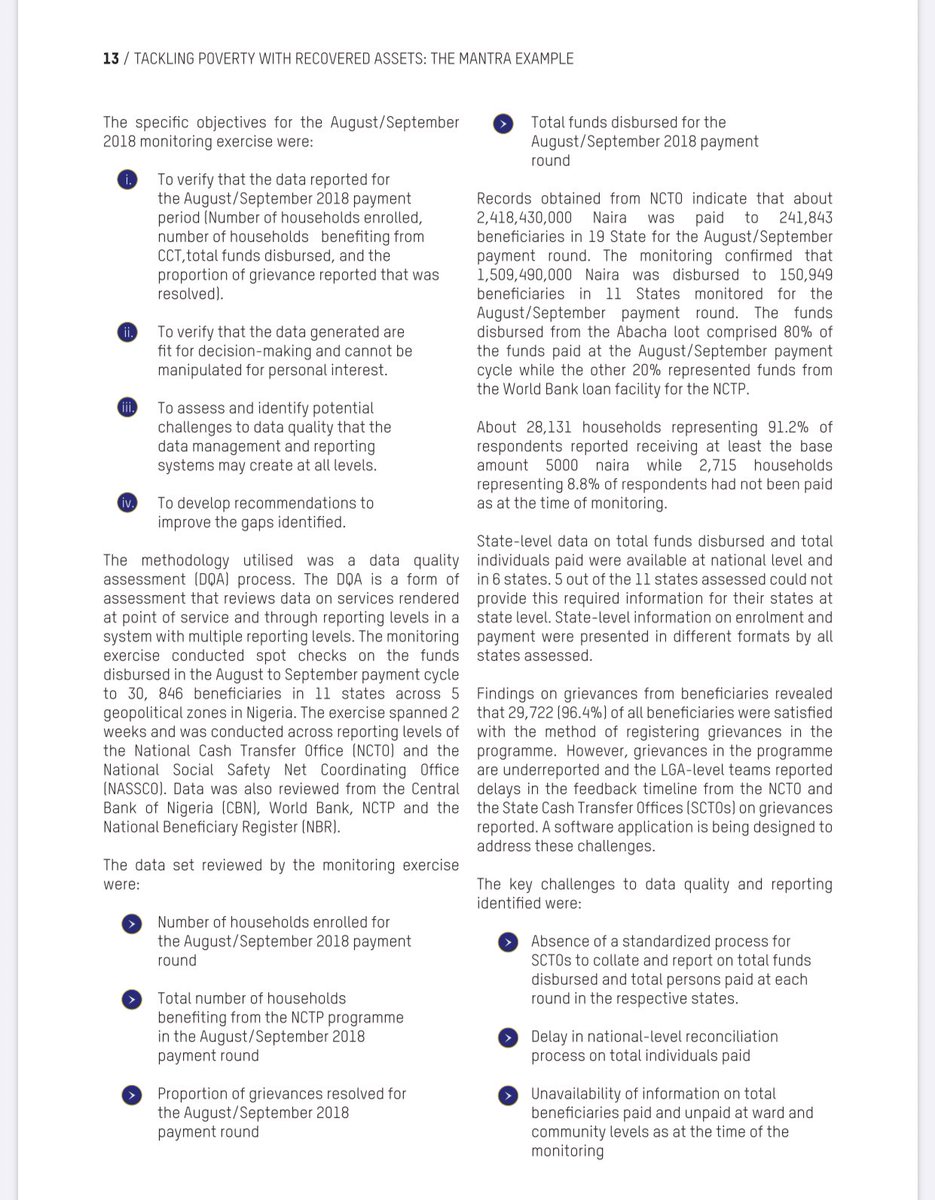
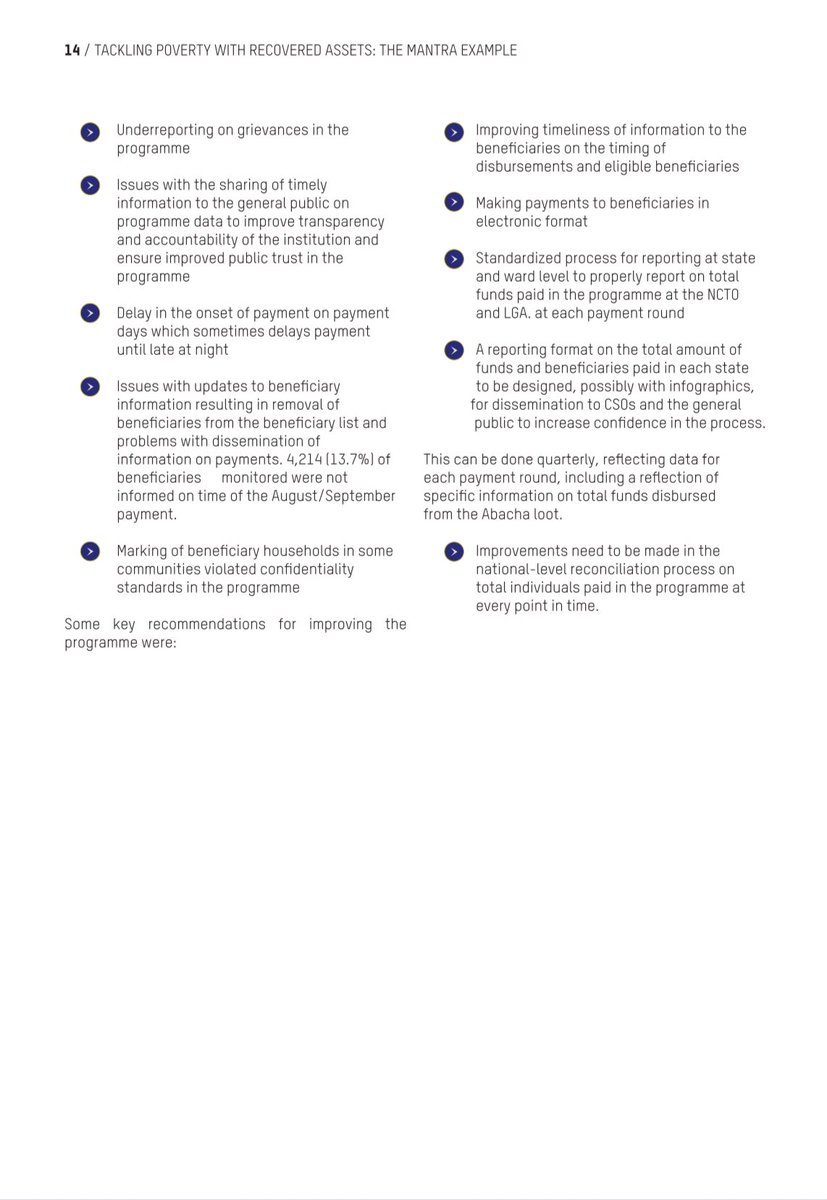
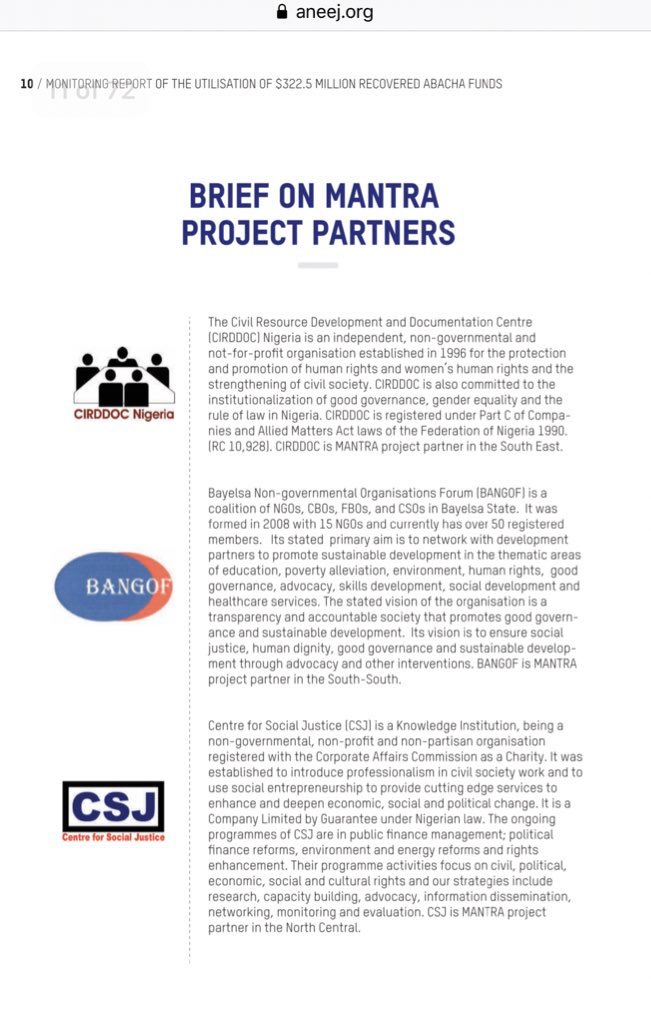
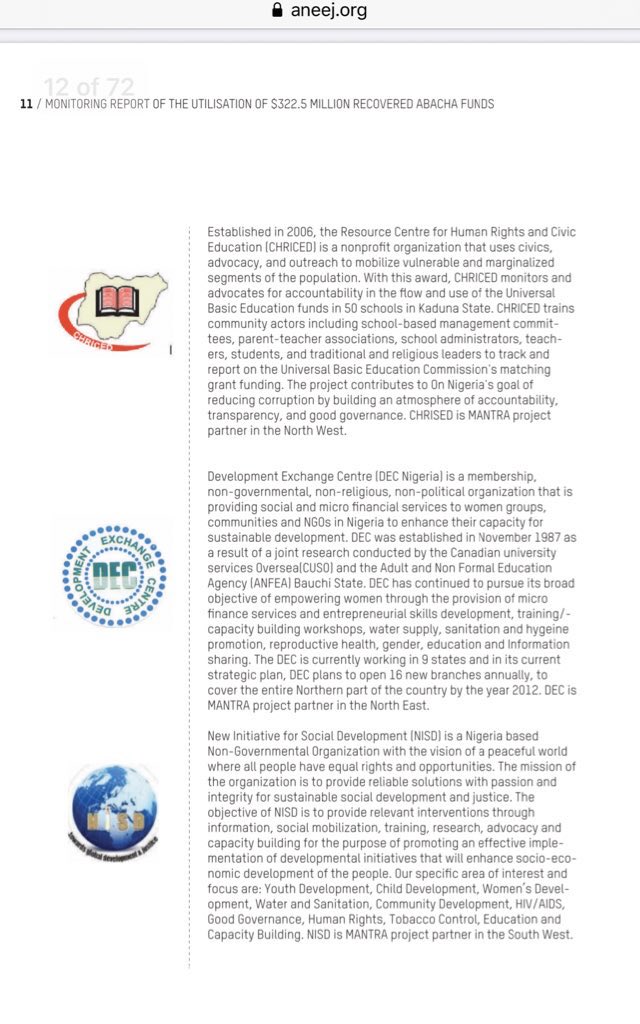
Because of the nature of the Cash Transfers (targeting poor households), they knew they had to go into the field. They didn’t track it on Twitter.
They did find that 91% of the households they tracked reported receiving the @HUPcct money.

1. It’s N5,000 monthly, paid every two months (which means every two months beneficiaries get 10k).
2. The N5,000 is the “base” payment - households with pregnant women, infants, school-age kids may get additional “top-up” payments
They are taken by @HUPcct from the National Social Register of Poor & Vulnerable Households
The National Social Register is compiled by @NasscoNigeria working w/ State Govts & local communities, & supported by the World Bank
